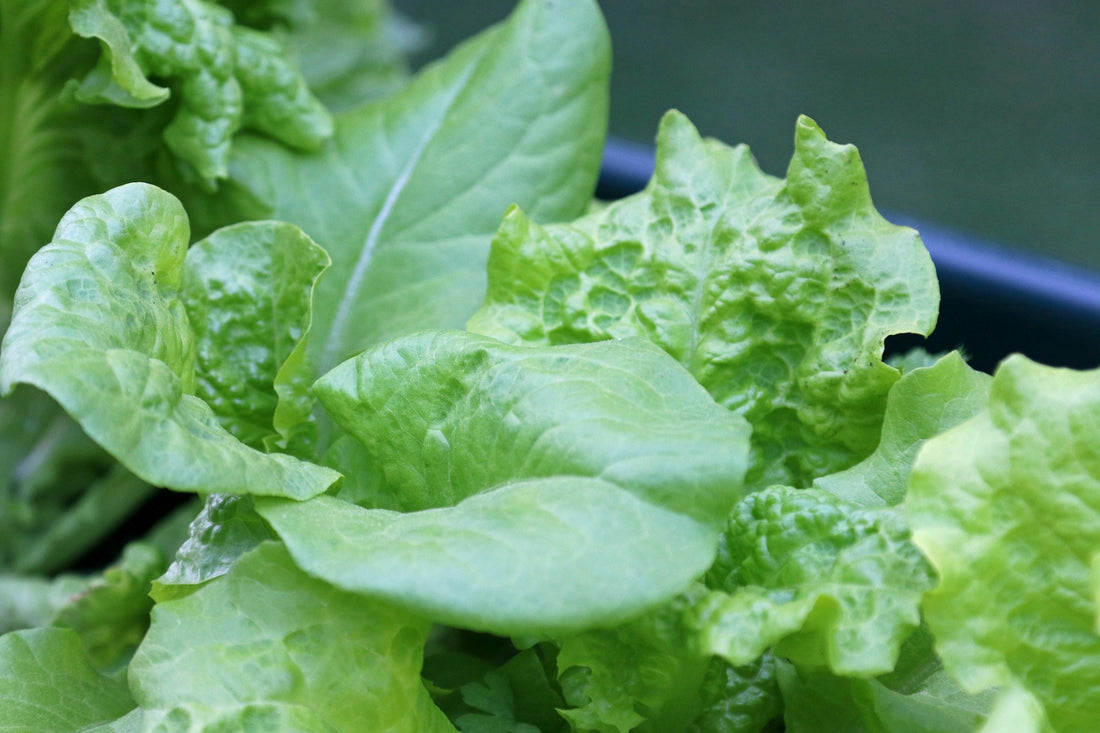Imagine enjoying crisp, fresh lettuce throughout the winter months! It's absolutely possible and simpler than you might think. Lettuce and other greens thrive in container gardens—with the added bonus of no weeds or pest problems.
After a 5-week growth period, six to eight containers can provide abundant harvests. This is enough yield for two-person salads three to four times weekly over approximately 6 weeks. Additionally, you'll have plenty of extra greens to enhance your winter soup recipes.
Growing winter salad greens under lights offers an excellent educational opportunity for children of all ages. The process presents numerous possibilities for science projects, and best of all, you won't encounter common outdoor gardening challenges like weeds or pest damage.
Setting Up An Indoor Salad Garden
This project offers a perfect opportunity to upcycle polystyrene containers (both foam and clear varieties). These containers are invaluable for starting spring seedlings, too. Alternatively, repurpose old wooden or plastic fruit crates. But remember to line the sides with a couple of layers of newspaper or weed barrier fabric since they're not solid. Choose wider containers whenever possible because they provide more space between plants and additional room for root development.
Don't feel pressured to buy expensive grow lights—standard fluorescent shop lights work perfectly well. Lights suspended using chains and S-hooks work great. There's no need to invest in costly hydroponic lighting systems. Standard fluorescent lights provide sufficient illumination for growing salad greens.
Aim to position the lights less than 2 inches from plant tops. Growth rates will vary among seedlings, which can make things interesting space-wise. For slower-growing plants, simply elevate them using books or boxes to ensure they receive enough light exposure.
Combine equal parts sterile soilless potting mix (suitable for seeds) and compost for a great seed-starting mix. Standard all-purpose potting mix also works well.
Press the mix into all corners. Well-filled containers provide more space for root growth, resulting in healthier, stronger plants. After filling, gently shake and tap containers to level and settle the growing medium.
Which Salad Greens To Plant?
Nearly any variety of salad or cooking greens works well—particularly quick-growing varieties and leafy herbs. Always follow seed packet guidelines for planting depth and spacing. When using containers, avoid overcrowding to ensure proper air circulation. Remember that contained plants need adequate root space since they can't expand into unlimited ground soil.
- Winter Lettuce: Oak-leaf lettuce and various leaf lettuces create an excellent salad foundation. These varieties excel with cut-and-come-again harvesting, allowing you to harvest individual leaves weekly for extended production periods.
- Asian Greens, Arugula, and Mustard: Among the most versatile winter greens, mizuna stands out. Its delicate, feathery leaves add both visual interest and a gentle, peppery kick to salads. Arugula brings its distinctive peppery punch to the mix. Mustard varieties contribute warming flavors and stunning leaf colors that enhance any salad's visual appeal.
- Winter Purslane: Known alternatively as miner's lettuce or Claytonia, this incredibly resilient winter green produces succulent, tender leaves. Its smooth, mild flavor makes it an excellent addition to winter salads. And its hardiness ensures reliable harvests throughout the cold season.
- Mâche: Often referred to as corn salad or lamb's lettuce, this mild-flavored green is one of the most generous producers. Its abundant leaf production provides an excellent foundation for creating substantial winter salads.
- Pea Shoots: Select hardy pea varieties to enjoy their sweet, vibrant flavor in leaf form. These delightful shoots offer versatility beyond salads – try them as a fresh, pea-flavored garnish atop warming winter squash soups. For continuous production, harvest the top 8 to 10 inches when the shoots reach that height. This encourages further sprouting.
- Mesclun: Mesclun or braising mixes (also marketed as stir-fry mixes) are quick-growing and available from most seed suppliers.
Indoor Salad Garden Care
- After sowing, water the seeds thoroughly. Water methodically back and forth until the potting mix becomes thoroughly saturated, then allow proper drainage.
- Once the seeds have germinated, maintain a consistent light schedule. The grow lights should be on from early morning until evening.
- Monitor moisture levels, watering every few days when the surface medium feels dry. Apply a diluted seaweed and fish emulsion solution (found at garden centers) weekly or every 10 days.
- Don't overlook the crucial step of thinning seedlings. Begin this process once plants develop two to three leaf sets, typically three weeks after germination. Remove plants growing closer than 1 inch apart by cutting them just above soil level. The method avoids root disturbance to neighboring seedlings. These thinned plants needn't go to waste – clean them thoroughly and incorporate them into soups or cabbage salads.
- Selectively harvest the outer leaves as your plants develop while allowing the inner growth to continue. For an alternative approach, use fingernail scissors to carefully trim greens throughout the container. Be careful to preserve the growing tips for subsequent harvests.
- Monitor your lighting setup carefully. Keep grow lights positioned 4 inches above the tallest leaves to prevent leaf scorching and ensure optimal growth conditions.
- After a 5-week growth period, six to eight containers can provide abundant harvests, yielding enough fresh greens for two-person salads three to four times weekly over approximately 6 weeks. Additionally, you'll have plenty of extra greens to enhance your winter soup recipes.
- Monitor your lighting setup carefully. Keep grow lights positioned 4 inches above the tallest leaves to prevent leaf scorching and ensure optimal growth conditions.



